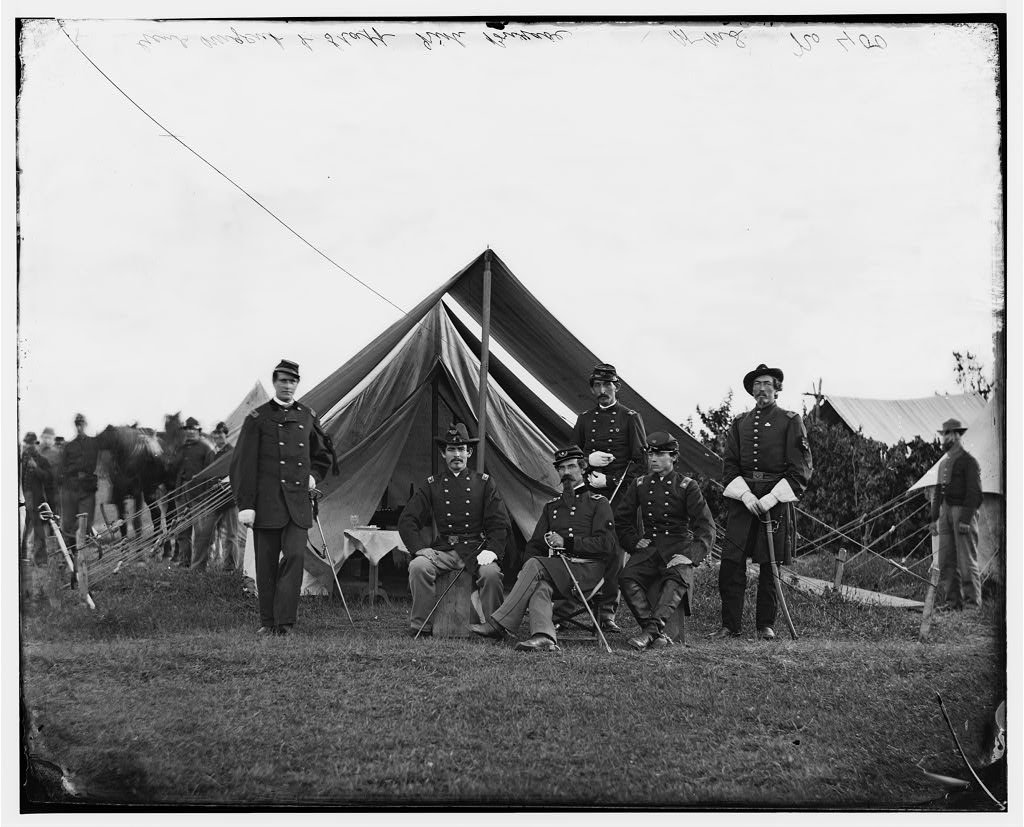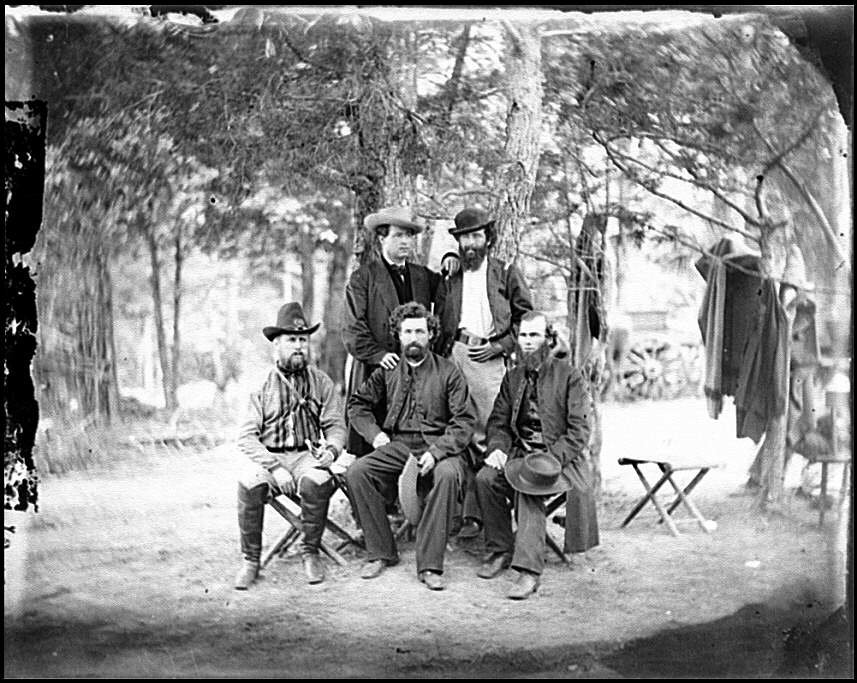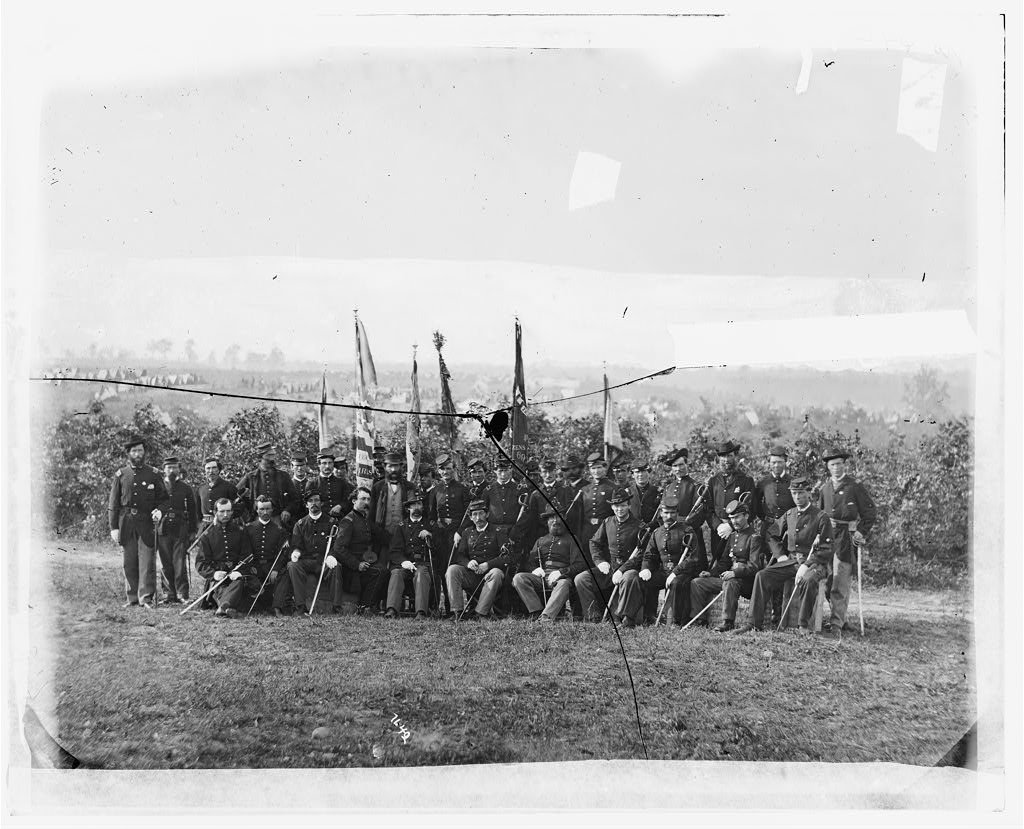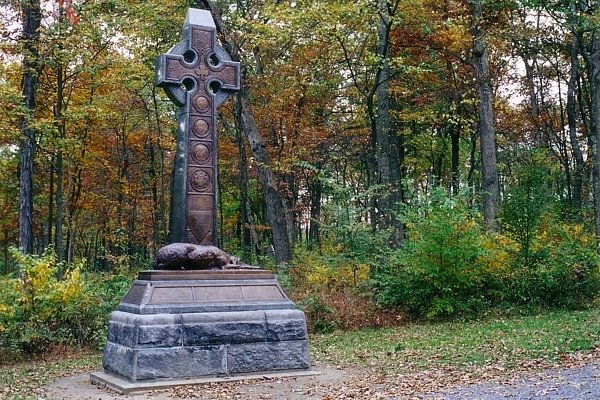
Union Army Gen. Robert Nugent and staff near Washington, D.C. Nugent helped form the Irish Brigade and was its last surviving officer in the waning days of the war. He led his men in a parade through Washington, D.C., after the Confederates surrendered. Photo courtesy fo the Library of Congress.
This article was originally posted on March 12, 2020, by the Department of Defense.
St. Patrick’s Day celebrations are an American tradition for anyone with Irish roots, but many may not know that during the Civil War, several Irishmen helped keep an American tradition — the U.S. itself — together.
What became known as the Irish Brigade was formed almost entirely by Irish-Americans from five units: The 63rd, 69th and 88th New York Infantry Regiments, and eventually the 116th Pennsylvania Infantry Regiment and the 28th Massachusetts Voluntary Infantry, a group famous for yelling “Faugh a Ballagh,” a Gaelic battle cry meaning “clear the way.”

In September 1862, the Irish Brigade helped lead the pursuit of the Confederate rebels in the bloody Battle of Antietam. While heavy casualties were claimed on both sides, the Union was able to force Confederate Gen. Robert E. Lee to abandon his invasion of the north, retreating back to Virginia.
The Irish Brigade unfortunately also took part in the doomed Battle of Fredericksburg in December 1862, where it lost two-thirds of its forces in a resounding Confederate victory. But despite those losses, the men weren’t too tired to celebrate St. Patrick’s Day.

According to a website dedicated to the 28th Massachusetts, the men kept up their “boisterous, rollicking” traditions, including a Grand Irish Steeple Chase, which attracted the attention of the whole army at their camp, as well as several traveling reporters. According to the website, Col. St. Clair Mulholland, of the 116th Pennsylvania, recalled the festivities, saying, “This time-honored national anniversary was observed with all the exhaustless spirit and enthusiasm of Irish nature.”
The Irish Brigade’s forces also played prominently in July 1863 during the second day of the decisive Battle of Gettysburg. The group fended off rebels who were set to overwhelm the entire Union position.

Gettysburg was largely considered the turning point in the Civil War, as well as for the Irish Brigade. By then the brigade had lost the majority of its remaining soldiers. Irish-American support for the war began to wane, too.
The Irish Brigade fought several more campaigns in the south after Gettysburg, but it officially disbanded in June 1864 due to heavy losses among the troops.
The “fighting Irish,” as many of them were known, contributed greatly to the Civil War, and their spirit and traditions clearly live on. Sláinte to them and their legacy!

For more content like this, visit defense.gov.
BRCC and Bad Moon Print Press team up for an exclusive, limited-edition T-shirt design!
BRCC partners with Team Room Design for an exclusive T-shirt release!
Thirty Seconds Out has partnered with BRCC for an exclusive shirt design invoking the God of Winter.
Lucas O'Hara of Grizzly Forge has teamed up with BRCC for a badass, exclusive Shirt Club T-shirt design featuring his most popular knife and tiomahawk.
Coffee or Die sits down with one of the graphic designers behind Black Rifle Coffee's signature look and vibe.
Biden will award the Medal of Honor to a Vietnam War Army helicopter pilot who risked his life to save a reconnaissance team from almost certain death.
Ever wonder how much Jack Mandaville would f*ck sh*t up if he went back in time? The American Revolution didn't even see him coming.
A nearly 200-year-old West Point time capsule that at first appeared to yield little more than dust contains hidden treasure, the US Military Academy said.












